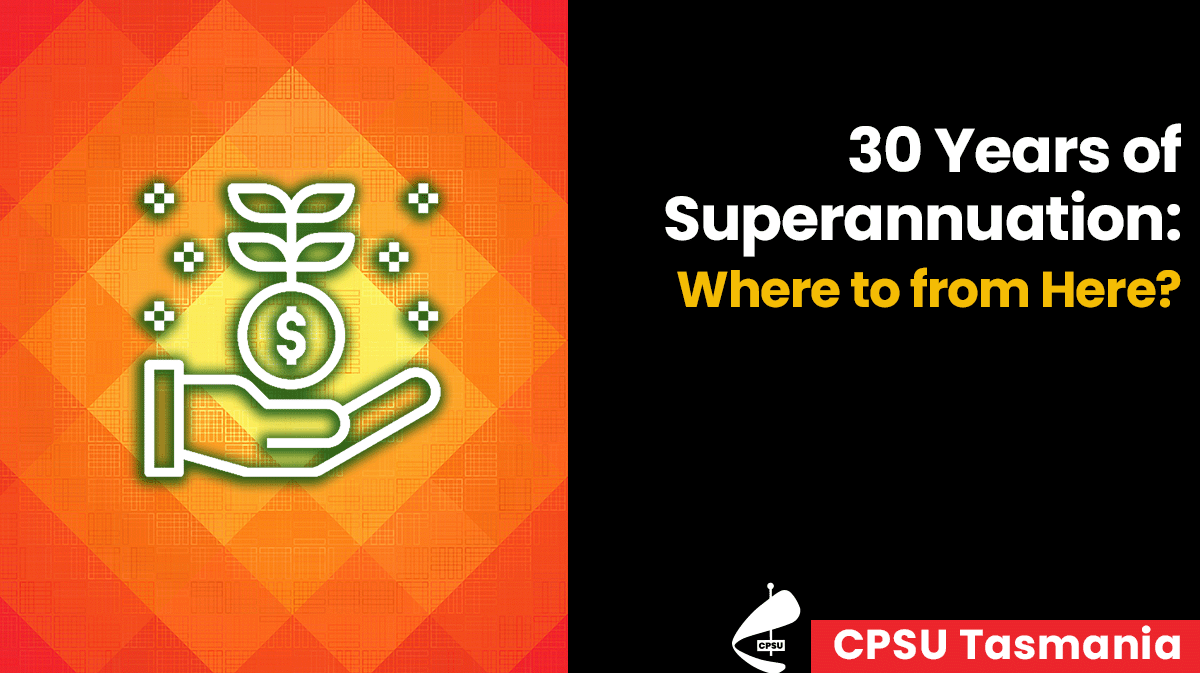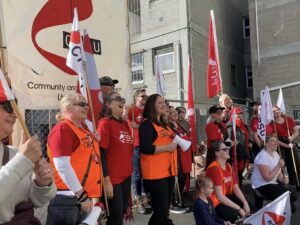
From little things, big things grow.
From humble beginnings in industrial bargaining campaigns in the 1970s, superannuation quickly evolved to industry-wide agreements between employers and unions, before finally being enacted into law for all workers in 1992. Today the Community & Public Sector Union are continuing to defend, strengthen and expand super to live up to the vision of workers’ capital envisioned by the Keating Government. Last week Paul Keating, Jim Chalmers, Bill Kelty and Sally McManus released a joint statement to mark the 30th anniversary of superannuation, saying:
“Nothing speaks more powerfully to the reform courage and foresight of the labour movement than the legacy of super and what that means for retirement incomes in this country. “
But with the average worker running out of retirement savings 10 years before the end of their life, there is still a long way to go before superannuation is universal, fair, and secure. Part of the solution is reducing the need for workers to make early withdrawals against their super due to financial hardship. Strongly opposed by the then-Morrison Government at first, it was eventually adopted and is estimated to have saved.
Just like Medicare, super was a victory fought for and won by working people in the face of fierce opposition. Just like Medicare, we’ve had to fight to defend it. When COVID hit, the then-Morrison Government’s solution was to force Australians to raid their super through the Early Release Scheme – projected to have cost Australians more than $42 billion in retirement savings. Australian Unions responded by pushing for the historic JobKeeper scheme, which subsidised workers’ wages to keep them on the books and ensure they had a job to come back to when lockdowns were lifted. The Reserve Bank estimates 1 in 5 workers would have lost their jobs if not supported by the subsidy.
Another piece of the puzzle is seeing superannuation expanded. From 1 July, 7 million Australians benefited from a 0.5% boost to the Superannuation Guarantee. The guarantee has allowed millions of low to middle income earners to save for retirement when otherwise they would have nothing. Workers retiring today will have $150 a week more (adjusted for inflation) than in 1992 – when just 1 in 10 retirees had any super at all. But there’s a third piece to the puzzle which unions can advocate for through our wages agreements.
Our Claims for Change
Despite everything superannuation has delivered for workers since 1992, as of today women still retire with half as much super as men. After years of campaigning, in our previous Public Sector Unions Wages Agreement CPSU members secured the right for workers to continue to receive superannuation on the unpaid period of maternity leave. Nationwide, unions are also pushing for the Albanese Government close the gender pay gap by legislating to ensure superannuation is paid on ever dollar earnt, including parental leave, in every industry.
Our 100 Claims for a Better State Service includes a proposed amendment to the Tasmanian State Service Award which would see the superannuation guarantee lifted to 13.5% for workers at the Tasmania Fire Service and Parks & Wildlife Service who are engaged in fire management, response and planned burning activities. This is necessary to recognise the additional physical toll faced by workers in these critical roles, and the need for earlier retirement to mitigate longer-term health impacts or injury late in their careers.
Just as it was in the early days, when building workers ran the first successful campaign for compulsory superannuation, it will take each of us standing up today to win our claims. You can help make it happen by signing up to support future campaign actions in our wages agreement campaign at https://www.cpsu.com.au/rightsvoicepay/ and by encouraging your colleagues to join the union for public sector workers at https://www.cpsu.com.au/join!








